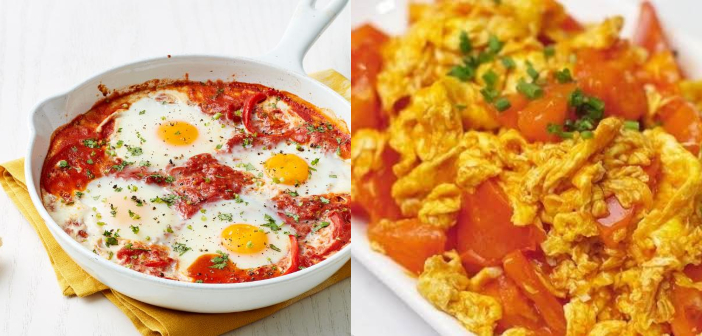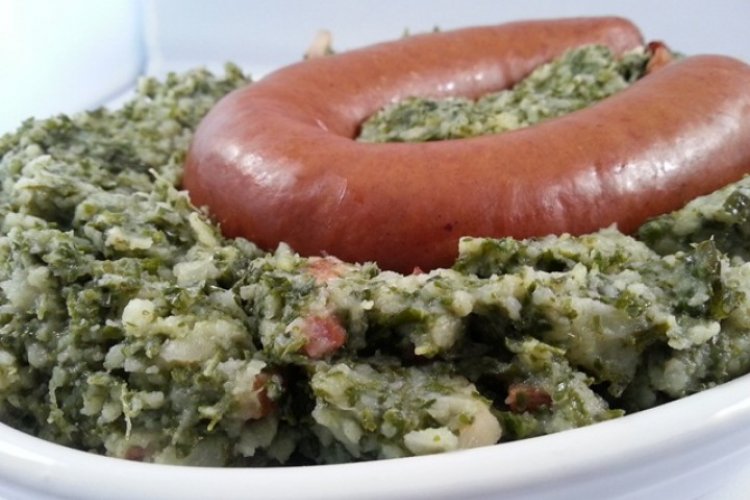I disagree. Each to his own, but I really enjoy this series. Not because it's so astonishing that different countries use the same ingredients, but because I enjoy learning more about different regional dishes from around the world. It's just an excuse to write about food and that's always ok by me.
“That’s Not Tomato & Egg, It’s a Shakshuka!” Closing the 7,000km Gap Between Chinese and Middle Eastern Cuisine
Editor's note: While the author of this piece resides in Israel and has experienced the following foods there, we understand many of these foods have their origins throughout the Middle East, sections of this article have been updated to reflect this.
I’m originally from China, but if you travel 7,000 kilometers across Asia, you’ll reach my current home: Israel. On the surface, Middle Eastern culture and Chinese culture are seemingly at odds with one another, whether it’s in their music, religion, or language. Upon closer inspection, however, the cuisines -of these two countries -- and those of the region of the Middle East -- actually bear surprising similarities.
Needless to say, I grew up eating traditional homemade dishes just like any other local Beijinger. However, when I relocated to Israel, I was overtaken by the contrasting flavors, a culture shock that took me nearly a year to adapt to. Nevertheless, over time, the tastes of the two countries began to merge in my mind. Some may call their similarities a mere coincidence, but I’m inclined to believe it’s one of the many signs that nationality and ethnicity aside, we’re not so different after all.
Kebab vs. Chuan’r

Kebab is the umbrella term for all meats and vegetables grilled on a skewer, and is believed to have originated in either Turkey or Iran. The most popular in Israel are beef and lamb kebabs. My family prefers to buy frozen, uncooked ones because grilled kebabs sold in shops may be the tastiest, but definitely aren’t the most healthy. Common vegetables include mushroom, eggplant, bell pepper, and onion, each adding a unique touch.
You may be thinking, isn’t this the same as the chuan’r (串儿 chuàn ér) served on Beijing sidewalks? Well, that’s absolutely correct! Chinese chuan’r has a long and storied history in Xinjiang, where my dad’s side is from. Just like kebabs, it involves grilling on a skewer. However, the main difference is that Chinese chuan’r are typically lamb or chicken cut up into significantly smaller pieces. The ingredients utilized in chuan’r, such as cumin, also gives it a distinct flavor.
Shakshuka vs. Tomato and Egg

Shakshuka derives from the Arabic word for “everything mixed up.” Of all egg dishes I've found while in Israel, this one is by far the most popular. Essentially, it’s poached eggs simmered in tomatoes and spices, commonly served in a metal pan. Personally, shakshuka isn’t one of my top picks, but the liquid inside the eggs and juicy tomatoes are a fan favorite amongst Israelis.
It’s not hard to guess which Chinese dish Shakshuka corresponds with. It’s the popular tomato and egg (西红柿炒鸡蛋 xī hóng shì chaǒ jī dàn), more commonly known as stir-fried tomato and scrambled eggs.
Despite the completely dissimilar cooking processes, the ingredients and color palette have bound them together as one. Both are considered main courses, with tomato and egg regarded as a simple and humble dish, while shakshuka requires a bit more culinary skill.
Pita Sandwich vs. Roujiamo

Just about every culture has its take on the sandwich, and the pita reigns supreme in Israel. A pita is a circular piece of bread sliced open on one side – creating a nice little pocket – and filled with falafel or shwarma and veggies, plus a generous dollop of hummus and tahini drizzle.
Pita finds a kindred spirit in roujiamo (肉夹馍 ròu jiā mó), which originated in China's northwest Shaanxi province and is often considered the Chinese hamburger. Admittedly, it's not as popular as pitas are with Israelis, however, it’s definitely a classic all across the Middle Kingdom. The overall concept is the same: stuffing a range of ingredients into a circular pocket of bread. A major difference though is that pita sandwiches are typically vegetarian, while the ‘rou (肉 ròu)’ character in ‘roujiamo’ indicates that meat is a crucial part of the dish. On top of that, pita bread is generally much thinner and softer.
READ: “That’s Not Jianbing, It’s a Galette!” French and Chinese Cuisine in Solidarité
This article originally appeared on our sister site, Jingkids International
Images: pamperedchef.com, ltl-shanghai.com, foodnetwork.com, justapinch.com, thekitchengirl.com, aromasian.com, cookingclassy.com, thewoksoflife.com
Related stories :
Comments
New comments are displayed first.C'mon guys. This is getting tiresome. People world over often mix the same ingredients. Were an Israeli in China to say, "That's Skakshuka!" I'd smack his mouth for bad manners. (YHWH's Chosen People and all notwithstanding.) A Chinese in Tel Aviv saying the contrary? Same-same. When you're on the other guy's turf, you defer to his tongue and customs.
My dear old grannie made jiao zi but called 'em piroje. In Central Europe it's her call. In China, China's.
My dear old grannie made jiao zi but called 'em piroje.
How amazing that different places stuff stuff inside flour pods.
Weird.









